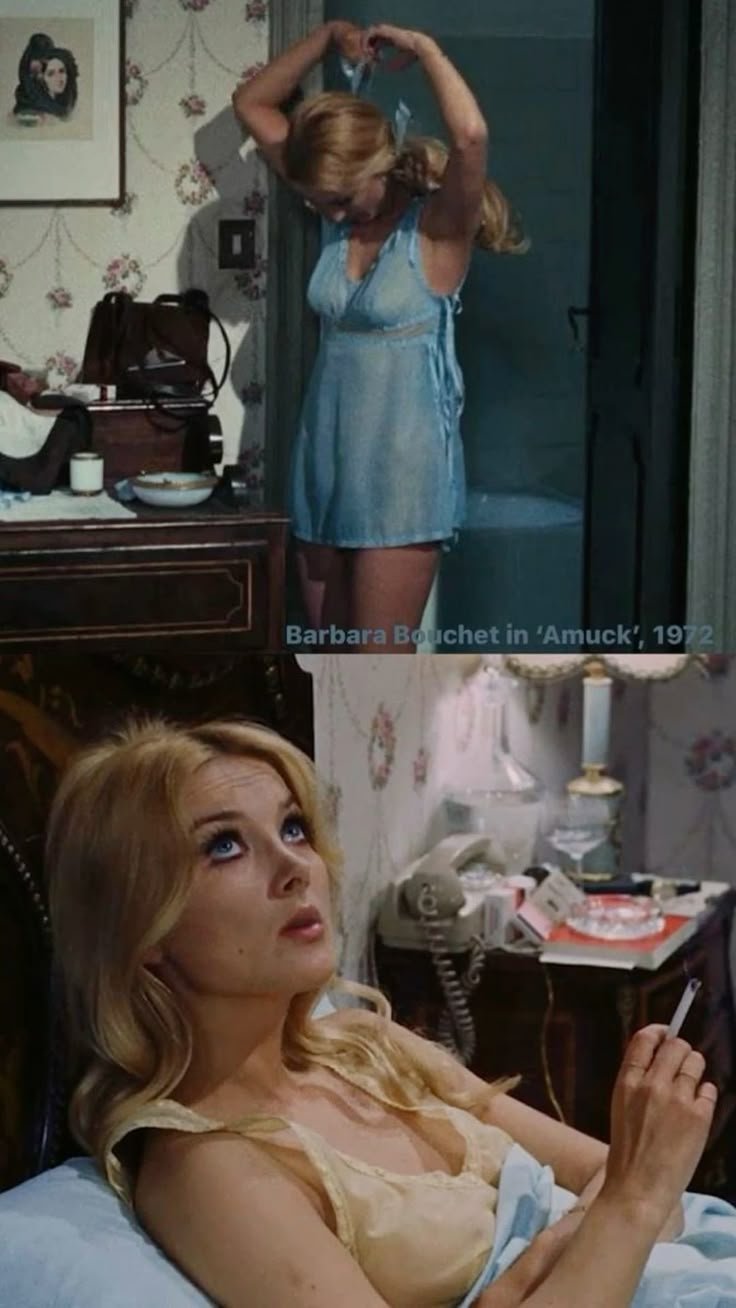The Bedtime Muse: The Golden Age of Glamorous Sleepwear
Sleep Renaissance
Some people collect vintage Manolo Blahniks. I collect vintage nightgowns.
We’re living through a wellness renaissance, and sleep is finally getting its moment. As saturated as the market has become, I hate to admit it but, I’ve tried nearly everything. Magnesium blends like Moon Juice’s Magnesi-Om, pillow mists by OSEA, silk pillowcases designed to reduce hair friction. The bedtime ritual is now a beauty practice, a healing modality, and a lifestyle all at once, and my nightstand is starting to look like a mini CVS.
But more than any supplement or scent, what’s made the biggest impact on my sleep is how I dress for it.
Sleepwear has always held meaning; shaped by history, art, and the intimate lives of women throughout time. From the silk robes of Chinese empresses to the sheer cotton gowns in 19th-century portraiture, what we wear to rest carries weight, even in its softness. I’ve been collecting vintage nightgowns since college. Rare silk slips in soft pistachio hues, 1950s Christian Dior nightgowns with embroidered hems, even a few pieces I found at estate sales in Virginia. I’ve come to see sleepwear as a kind of living archive, where fashion, femininity, and intention come together. The silk is buttery. The lace detailing is so delicate. I wear them at home. In hotel rooms. Sometimes I’ll throw on boots and a long coat over one and wear it out to dinner.
There’s something luxurious about having a personal wardrobe for winding down. The art of sleepwear is what makes getting ready for bed feel cinematic. It’s giving grown woman sleepover but, just with myself.
The Ancient Art of Silk: From China with Dreams
The story of silk begins in China around 2700 BCE, with a moment that reads almost like a myth. Empress Leizu was sitting under a mulberry tree, drinking tea in the imperial gardens, when a cocoon fell into her cup. As she lifted it out, the heat caused the delicate threads to unravel between her fingers. Intrigued, she began pulling at the fine filament, watching it stretch longer and longer. That single cocoon yielded nearly a mile of thread. She studied the silkworms, learned to cultivate them, and developed methods for reeling and weaving the fiber. What began as a quiet observation became the foundation of sericulture and sparked one of the most luxurious and influential textiles in human history.
Silk was trade, power, health, and art. And it belonged to sleep before it belonged to fashion. Taoist traditions saw it as a natural conductor of balance and peace. It was breathable, temperature-regulating, and hypoallergenic. Royalty wore it to sleep because it maintained harmony in the body’s energy while promoting rest and rejuvenation. Traditional Chinese medicine recommended silk to soothe skin irritation and improve sleep quality - centuries before people started selling silk pillowcases on amazon.
Silk robes were worn to be seen as a symbol of rank and maintain internal balance, a principle rooted in Chinese philosophy. Silk, considered a yin textile, supports the flow of qi during rest. Unlike the rigid garments of earlier dynasties. Sleeping in silk was believed to ease the mind, reduce inflammation, and promote longevity. And yes, science backs it up. As we sleep, the skin undergoes a process of regeneration : cells rebuild and tissues repair. Silk’s molecular structure contains proteins and amino acids that are hypoallergenic and antimicrobial. Its cooling properties help regulate body temperature, which supports the body’s circadian rhythm. A 2020 study in Nature and Science of Sleep found that breathable fabrics like silk improved sleep efficiency - especially for those with sensitive skin or hormonal shifts. Which may explain why I wake up glowing when I sleep in silk.
Fabric of Her Fantasy : Hollywood’s Golden Age
Painted in Peignoirs
I’ve always been drawn to paintings that show women as they really lived - at ease, in private, dressed in fabrics meant for comfort rather than performance. In the 1600s and 1700s, artists began capturing women in garments like négligés, chemises, and peignoirs made from muslin, silk, and lawn cotton. These pieces symbolized softness and status. Jean-Baptiste Greuze’s The Sleeping Girl (c. 1765) shows a young woman resting in a pale, draped chemise.
The word “pajama” comes from the Hindi word : pyjama, meaning leg garment, introduced to Europe through colonial exchange and gaining popularity in the 1930s as women embraced trousers. The robe en chemise spread beyond France—Marie Antoinette gifted muslin to Georgiana of Devonshire, who wore it to a concert in 1784, helping popularize the style in England.
This sensibility carried into later works like John Collier’s The Sleeping Beauty (1929) and John William Godward’s Preparing for the Bath (1900), both notable for portraying luxury nightwear as artful and intimate. Marie Antoinette’s portrait in a muslin gown, “Marie Antoinette in a Chemise Dress”, 1783 caused a stir for resembling an undergarment rather than royal attire, which was a quiet rebellion against court fashion. Although the robe en chemise seemed simple it was labor-intensive, made from muslin imported from India with intricate ruffles that marked status.
Lingerie and sleepwear used to be part of the fantasy. Somewhere along the way, we swapped it for oversized tees and practicality.
Elizabeth Taylor in Cat on a Hot Tin Roof and Jayne Mansfield in Promises! Promises! glided across the screen in whispery slips and feathered robes, each capturing the essence of glamour. Marilyn Monroe, in How to Marry a Millionaire (1953), turned bedtime into a performance, lounging in a lavender satin robe. Doris Day, in Pillow Talk (1959), made even her pajama collars look flirtatious. By the 1970s, Tamara Dobson in Cleopatra Jones (1973) served full silk robe and head wrap glamour while on an undercover mission.
Sleepwear became a canvas for moods: flirting, plotting, grieving, or daydreaming.


























